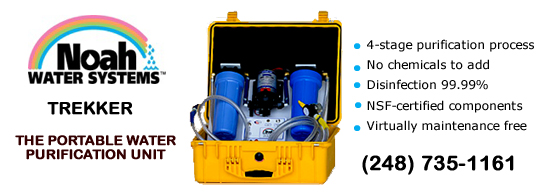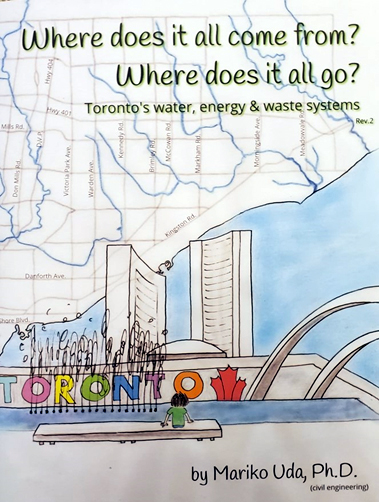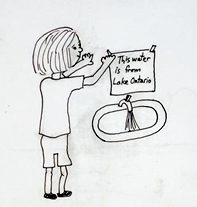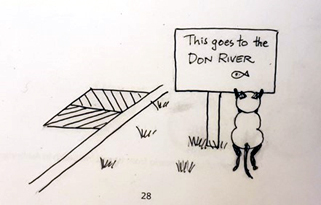2022/2/24 Books
brought to you in part by

Picture Book Guide to Toronto’s Water, Wastewater and Energy Infrastructure
WT Interview with Mariko Uda, Author and Illustrator of Where does it all come from? Where does it all go?
WT staff

WT: Welcome Mariko, what gave you the idea to write a picture book about Toronto’s water and wastewater infrastructure?
Uda: I have always been into the environment since high school. I studied biology and chemistry, I studied civil engineering. When I was studying engineering, I learned a bit about our water systems and energy. I thought this was interesting, basic information that everyone should know a little bit about. I also got into place-based thinking. I realized, we all live in this city, we turn on our taps, switch on our lights, flush the toilets but we don’t know where it comes from or where it’s going.
I think it’s important that we know the basics, especially things we rely on for everyday living. I created a PowerPoint presentation for adults, presented at the University of Toronto. I emphasized connection to place, explaining how things work and then connecting them to a particular water body. For Toronto, that’s Lake Ontario and the rivers and creeks in Toronto. Our stormwater system, we are each connected to a river or creek. So, in explaining, I was very specific, saying wastewater from this location is going to THIS sewage treatment plant. Instead of saying your household garbage goes to a landfill site, I show that it goes to THAT landfill.
I was doing this presentation over and over again, at some point I realized it could be told as a story in a simple way, to reach more people. The idea for the picture book came into my head, to make it simple, to make it fun, and make it accessible to everyone, that’s how this evolved.
WT: With a picture book for children, you know you are reaching the parents as well; what feedback have you had, are people more aware of their water source, and the wastewater plants?
It looks like a picture book for kids, but actually, in my mind, I’m trying to reach everybody. I marketed this as an “all ages” picture book. I wrote it for busy adults. If you want the information on water, for example, you can go digging for it and find it, but I have made it all accessible and easy to read, adults can read this in twenty minutes.
I wanted to reach newcomers too. Some may not have English as their first language, they may be curious about the water and energy, and they may even ask someone who has lived here all their lives, but then that person may not know the details.
Even highly educated people, even Ph.D. civil engineers don’t always know the specifics. The people who know how the processes work, don’t necessarily know the specific landfill their household waste goes to, for example.
 
WT: You have practical suggestions in the back of the book, to connect efficient fixtures, to fix leaks, what not to flush. Do you think your readers are motivated to act on those tips?
Uda: That’s what I was hoping! I do have a tip sheet in the back of the book. I don’t preach about what to do in the book itself. The book is more about connection and relationship to your place, belonging. I am trying to connect people to their environment within the city of Toronto. I am hoping as people feel connected, they will become curious, and look at the tip sheet to see what they can do. The main point is to connect people, that is the first step. Hopefully, the book does that, and as people come to understand, “what are the rivers in Toronto?”, “How does our rainwater get to the rivers?” I hope this plants seeds of thoughts and feelings, and knowledge, the book is meant to inform people so that they will want to take care of this environment of ours. I gave just enough detail to encourage people to become a steward, having the knowledge to be a steward.
WT: You are a Ph.D. Civil Engineer; you obviously deal with very technical matters in your work. Was this your first book project, your first cartooning project?
Uda: When I was little, I wanted to draw all the time. Later I got into technical subjects, engineering, and architecture, but I have always loved teaching and art.
This book was my chance to bring everything together. When I started thinking of a book with maps and explanations, in 2019, I decided to get to it. I signed up for a cartooning class, I got a lot of help with the characters, all the images I had in my head, I had to learn to draw them in different positions. I picked a character that Torontonians could relate to. The cat was added as an element of fun, I have a cat, so I know what they do, they sit on laptops, they sleep a lot. I do know that people like the cat!
WT: So many environmental issues can be serious, and sometimes downright frightening. Tell us how your readers respond?
Uda: Environmental matters can be overwhelming, there is a lot of doom and gloom. When you think about all the work we have to do, it can cause people to shut it out. With the book, I put less weight on results and more on the process. I think we need to move in the right direction, and do this with understanding, peace in our hearts, and humour! Humour always makes things more palatable, makes the medicine go down. I like to have fun; I want people to enjoy reading my book. I did not want it to be just environmentalists reading the book, those people are already on board. I wanted this to appeal to everyone. Adding humour extends the reach of my book.
WT: Did your readers make the connection that their drinking water comes from Lake Ontario and that their wastewater also goes to Lake Ontario?
Uda: Oh yes, it is pretty clear in the book, the four drinking water treatment plants in the city draw from the lake, the intake pipes run kilometres out into the lake where the water is cleaner. They also see where the wastewater is piped back to the lake, people do make that connection from the book.
WT: Will you write again, for other cities, or cover other topics?
Uda: Yes, I would like to do more books. I have thought about a book for other cities, using a similar style. I am interested in other subjects too, food for instance, where does our food come from? A book that goes into more detail on garbage, dealing with recycling and green bin, that could be a book on its own. Our data, our digital information, this one is not as visible, but we do have information infrastructure, this is another possible subject for future books.
WT: Thank you for taking the time with us, good luck with your projects.
|